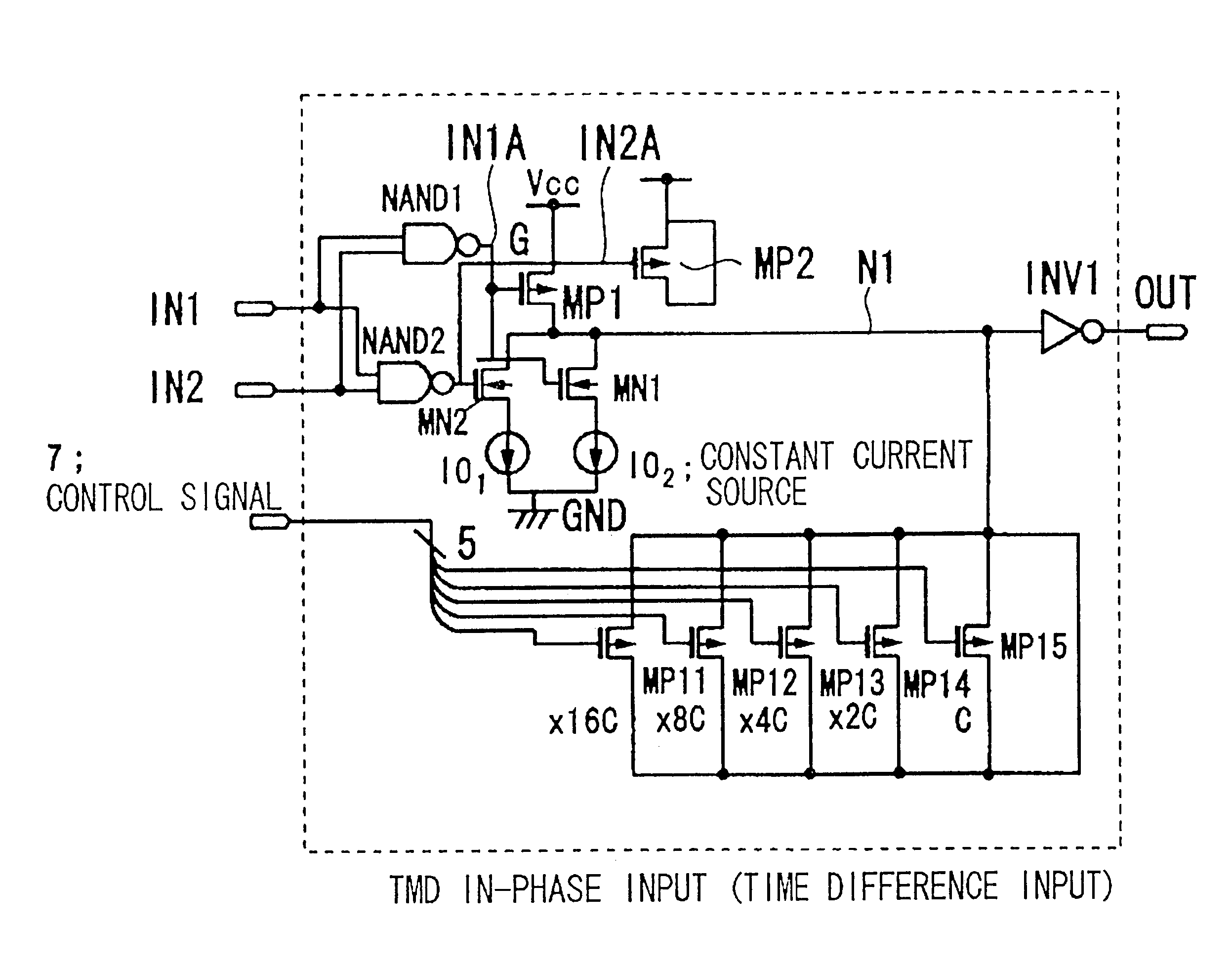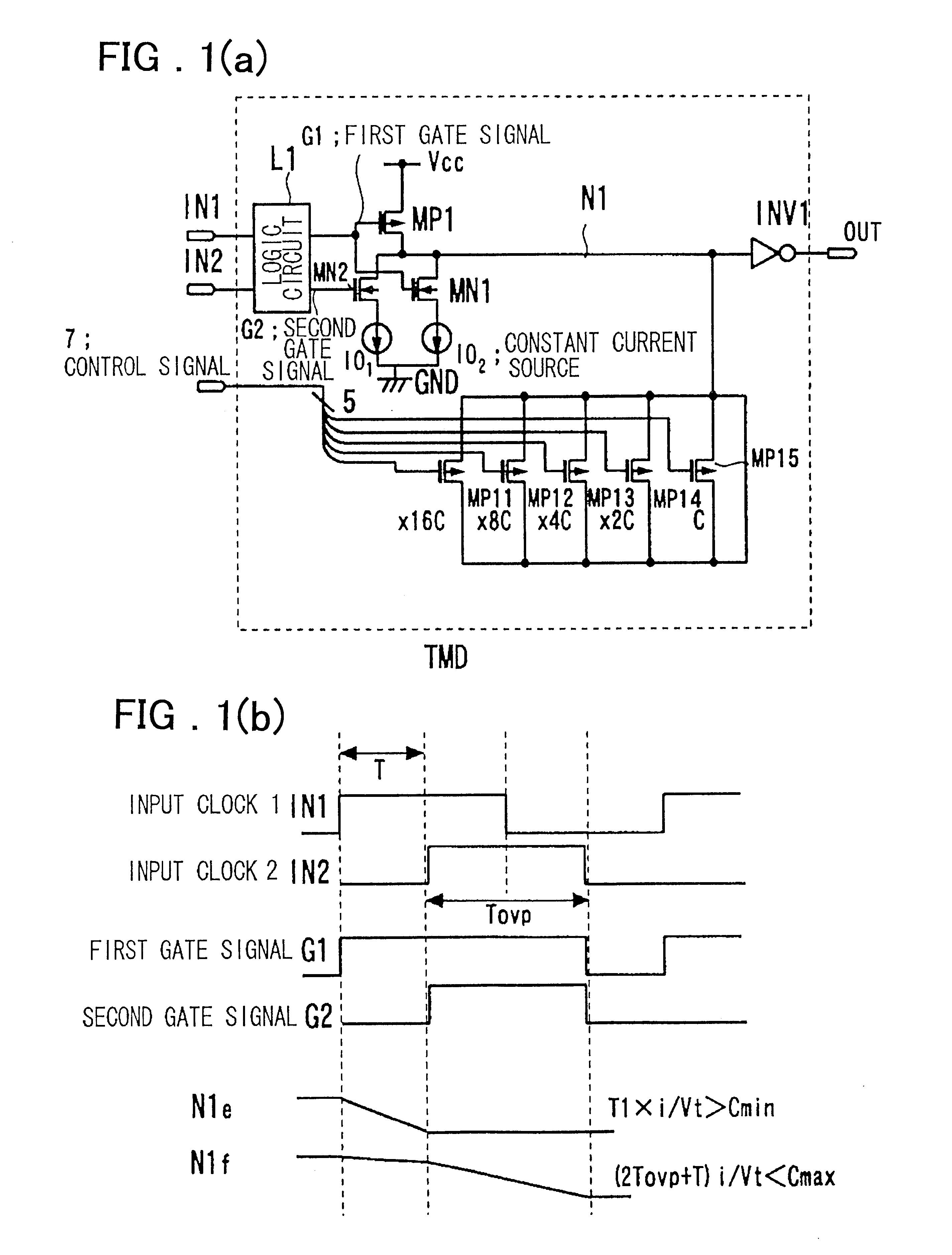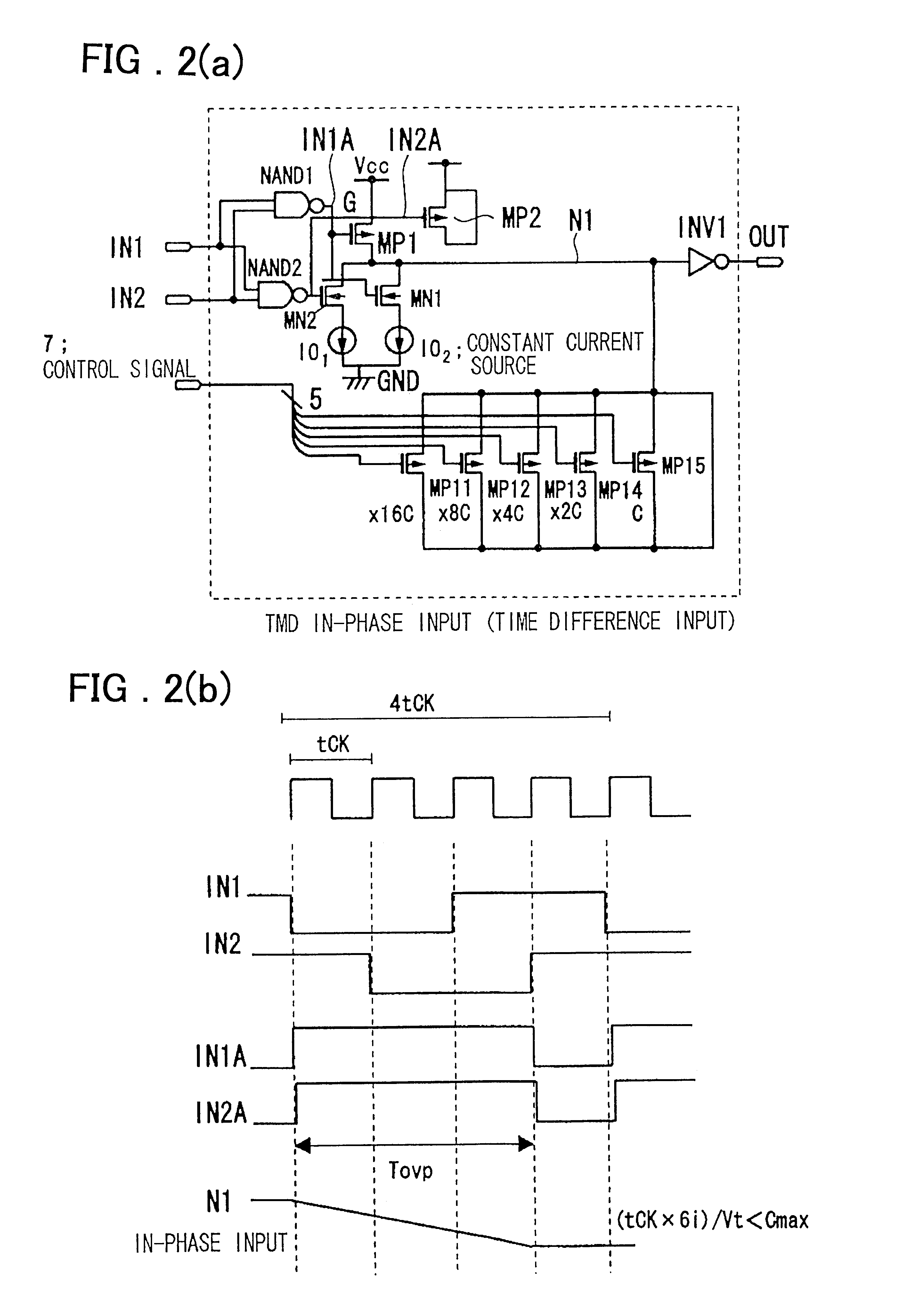Timing difference division circuit and signal controlling method and apparatus
a division circuit and signal control technology, applied in the direction of pulse manipulation, pulse technique, computation using pulse rate multipliers/dividers, etc., can solve the problem of insufficient operating speed, achieve the effect of increasing chip area, preventing the increase of chip area, and increasing operating speed
- Summary
- Abstract
- Description
- Claims
- Application Information
AI Technical Summary
Benefits of technology
Problems solved by technology
Method used
Image
Examples
Embodiment Construction
An embodiment of the present invention is explained. The present invention is directed to a timing difference division circuit at least including two switches MN1, MN2 connected in parallel to control a path between an inner node N1 and a power source on or off, one of the switches MN1 being turned on based on one of two input signals IN1, IN2 undergoing faster transition to charge or discharge a capacitance C appended (connected) to the inner node N1 with a first current (I), the other switch MN2 being turned on based on the other input signal undergoing transition with a delay with respect to the one input signal, the capacitance appended to the inner node being charged or discharged through the one switch in the on-state and the other switch in the on-state with a current value corresponding to a sum (2I) of the first current and a second current; there being provided a buffer circuit INV1 an output logic value of which is changed when the voltage of the inner node exceeds or is ...
PUM
 Login to View More
Login to View More Abstract
Description
Claims
Application Information
 Login to View More
Login to View More - R&D
- Intellectual Property
- Life Sciences
- Materials
- Tech Scout
- Unparalleled Data Quality
- Higher Quality Content
- 60% Fewer Hallucinations
Browse by: Latest US Patents, China's latest patents, Technical Efficacy Thesaurus, Application Domain, Technology Topic, Popular Technical Reports.
© 2025 PatSnap. All rights reserved.Legal|Privacy policy|Modern Slavery Act Transparency Statement|Sitemap|About US| Contact US: help@patsnap.com



